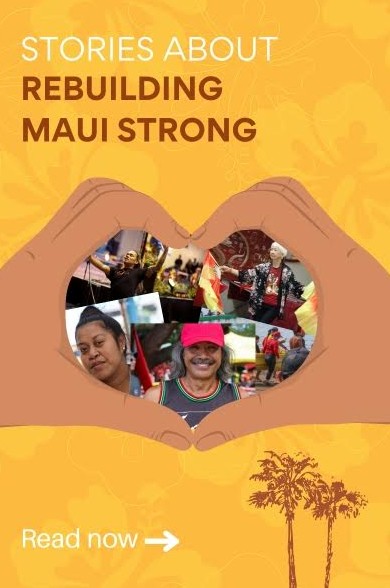By Amy Xiaoshi-Depaolo
Although racism has been declared a public health emergency by many areas across the U.S., eliminating it is another, much more complex matter, according to experts at Health Affairs.
The health policy journal hosted a virtual forum Tuesday on its October issue centered around tackling structural racism in health, including in data, state laws and institutions. According to Simbo Ige, managing director of the Robert Wood Johnson Foundation, focus on how racism affects the mental and physical health of people of color has sharpened in recent years.
“The pandemic made us approach public health differently and address it as an urgent challenge,” Ige said. “But we cannot improve health in the U.S. if everyone doesn’t have an equal opportunity.”
But discriminatory practices remain—including race-based medicine, clinical algorithms, failure to adopt policies to limit implicit bias and the underpayment of healthcare workers—with structural racism engendered across institutions and into the law of the land itself, said Ruqaiijah Yearby, an Ohio State University professor and a Health Affairs Issue adviser.
Even today, many medical practitioners and researchers continue to “use race as a proxy for biological differences that fail to account for other factors associated with health outcomes,” said Tina Hernandez-Boussard, a professor and the associate dean of research at Stanford University. These biases can make their way into AI algorithms, which are becoming more prominent.
The bias often causes harm to people of color, particularly when talking about Black patients and their pain tolerance. Similarly, the “healthy immigrant effect” claims that immigrants “display better health than their US-born counterparts, despite overall lower socioeconomic status and limited access to resources.” However, immigrant children face higher harm to health, mostly due to lack of insurance and high medical costs, than U.S.-born children.
In addition, 1 in 4 low-income Asian Americans in California experienced food insecurity, according to a study that analyzed data from the California Health Interview Survey (CHIS). It included data for low-income AAPIs, including Chinese, Filipino, Japanese, Korean, South Asian, and Vietnamese, from 2011 to 2020.
Participation for CalFresh, the California-specific SNAP program, was low among most AAPI groups compared to other ethnic groups, said Milkie Vu, an assistant professor in preventive medicine at Northwestern University.
Factors included a negative perception of government assistance. However, language barriers were not a factor in not signing up. Around one-third of AAPIs live in California; as a result, the California Health Interview Survey is conducted in multiple Asian languages to connect with those with low English language proficiency. Outside of California can be a different story.
Vu also stated how AAPIs are harmed by not being individually grouped according to country of origin in datasets. The homogenous “Asian Americans” category makes it difficult to understand the disparities between groups, which in turn affects the efficiency of helpful programs and public policy decisions.
It can also lead to continued health issues, sometimes fatal, for individuals. A Health Equity study described an analysis that pinpointed cancer as the leading cause of death for Asian Americans. But when the data was disaggregated, “heart disease was the leading cause of death for Asian Indians, not cancer.”
In some datasets, the AAPI community is excluded altogether. According to the study, “the annual USDA national food insecurity report, last published in 2022, included separate estimates for White, Black, and Hispanic populations but failed to include either aggregated or disaggregated Asian populations.”
The model minority stereotype, which portrays all AAPIs as having high socioeconomic success, is a key factor, Vu said.
But the report shows that Filipino adults in California face the highest percentage (40%) of food insecurity out of all AAPI groups. Meanwhile, Japanese adults reported the lowest level of food insecurity.
But the specific reasons behind the data—including generational attitudes, income and personal barriers—remain unanswered for now, Vu said. “More research is needed about the whys.”
In the meantime, the increase of research “marks an important step in the right direction,” said Ige. She announced that the Robert Wood Johnson Foundation is launching an initiative called The Intersection, which will be a network to share health-related insights on data.
“We need to fill the shared responsibility … the system includes all of us,” she said.
There is also a need to further understand intersectionality, as well as how the government, academic research, medical practices and policies function together.
“Interventions that focus on one institution at a time have largely not led to durable changes,” said Gilbert Gee, a professor and chair of UCLA’s Department of Community Health Sciences. “Structural institutions collaborate together to uphold the system.”
REVISION NOTE: A previously published version of this story referred to Simbo Ige as “he.” Ige’s preferred pronouns are she/her. This story has been revised to reflect that.
Support our June Membership Drive and receive member-only benefits. Help us reach our goal of $10,000 in new donations and monthly and annual donation pledges by the end of the Month.
We are published by the non-profit Asian American Media Inc and supported by our readers along with the Robert Wood Johnson Foundation, AARP, Report for America/GroundTruth Project & Koo and Patricia Yuen of the Yuen Foundation.
You can make your tax-deductible donations here via credit card, debit card, Apple Pay, Google Pay, PayPal and Venmo. Stock donations and donations via DAFs are also welcomed. Contact us at info @ asamnews dot com for more info.




